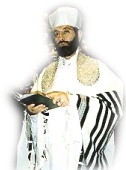|
||||||||||||||||||
|
|
||||||||||||||||||||
Collectively these letters are sometimes called "Begedkephat letters" as an acronym for the names of letters:
|
If one of these six letters has a Dagesh Kal mark it will have a hard pronunciation, otherwise it has a softer pronunciation.
However, in modern Hebrew, only three letters change their sound when there is no dot inside: Bet, Kaf, and Pey (the other three letters are pronounced exactly the same as their non-dotted cousins). Consequently you only need to remember to pronounce these three letters differently when they do not have the Dagesh Kal mark: |
 |
|||
| Notes: | |||
|
 |
||||||||||
Advanced Grammatical Information
The Dagesh Kal only appears in these six letters (Bet, Gimmel, Dalet, Kaf, Pey, and Tav) and will only appear:
In other words, it will only appear if it opens a syllable.
Most commentaries are of the opinion that the Dagesh Kal is different then the Dagesh Chazak. While the Dagesh Chazak tells us of a missing letter the Dagesh Kal does not. The Dagesh Kal is just another pronunciation of a letter. Its purpose is to form a new sound and not to notify us of any missing letters. Finally, these Begedkephat letters may also have a Dagesh Chazak, though the Dagesh Chazak will appear identical to the Dagesh Kal. The rule of thumb is this: if the Begedkephat letter has a vowel preceding it, the dagesh is Chazak instead of Kal. In other words, if there is no vowel preceding it (e.g., the letter starts a syllable or word), then the dagesh is Kal and not Chazak. This should be clearer after you have finished Unit 3. |
||||||||||



No comments:
Post a Comment